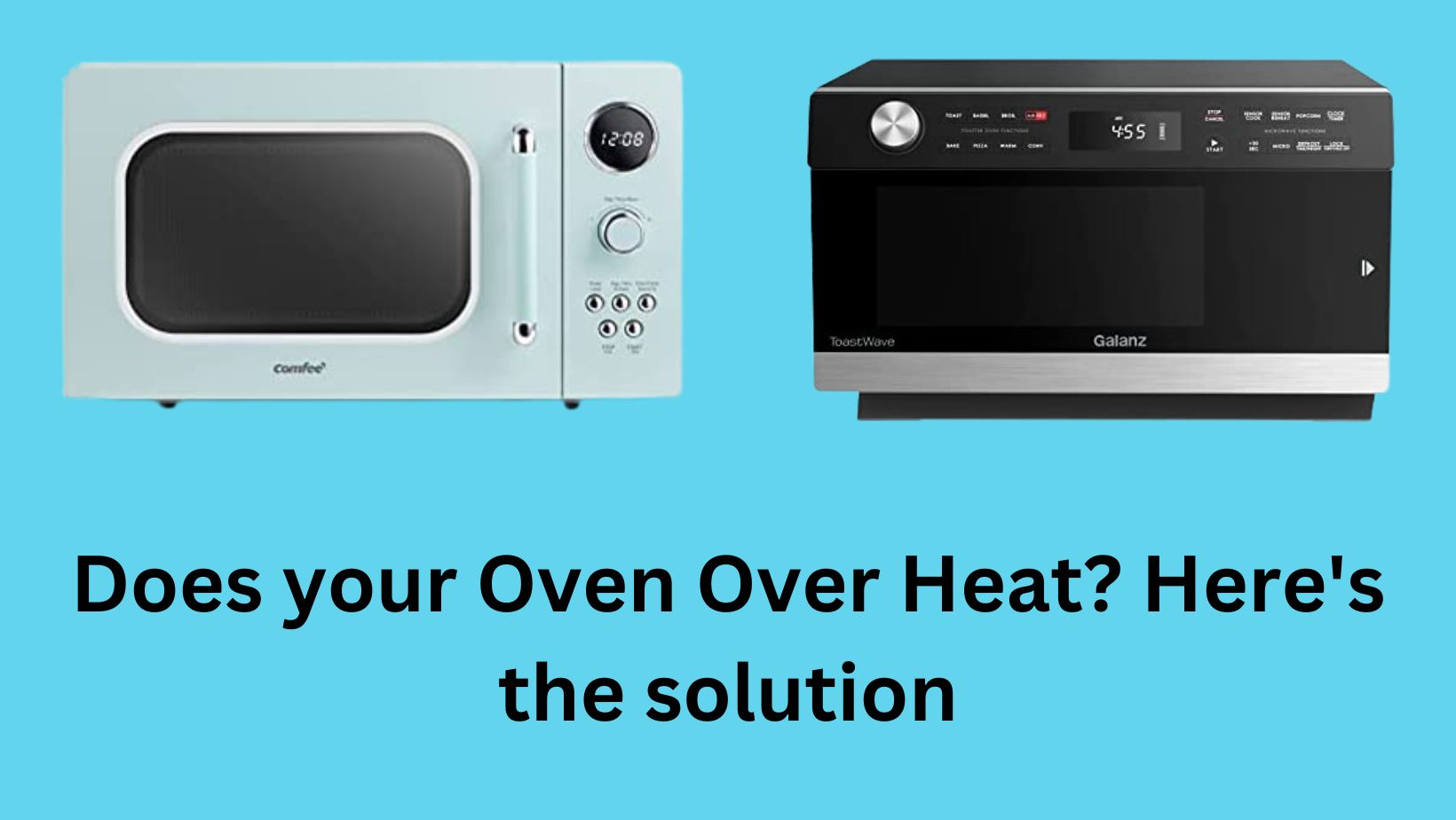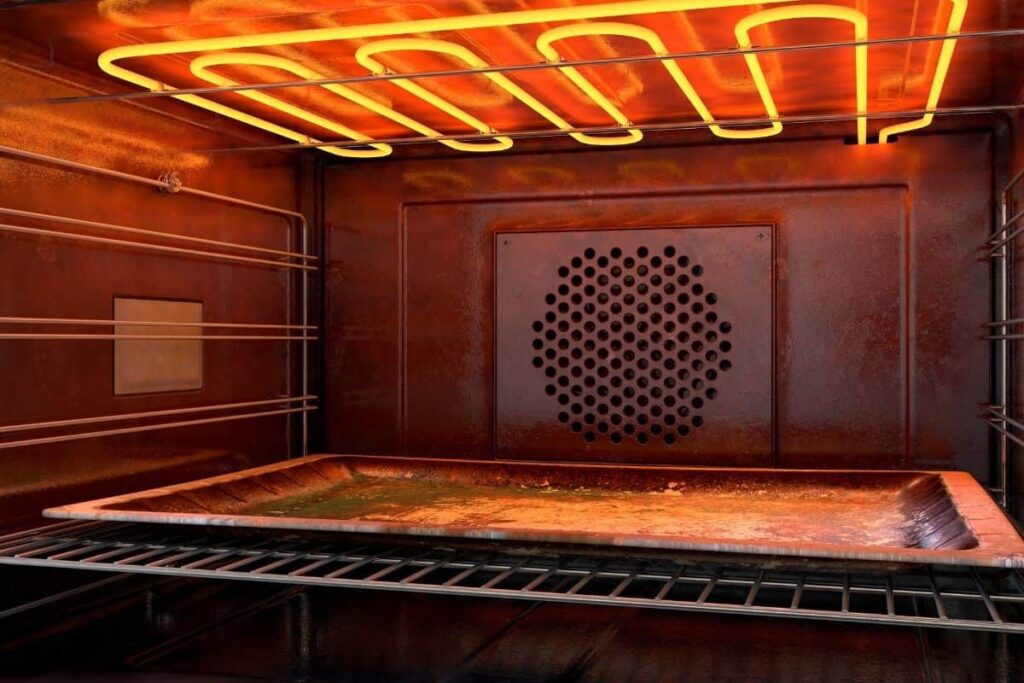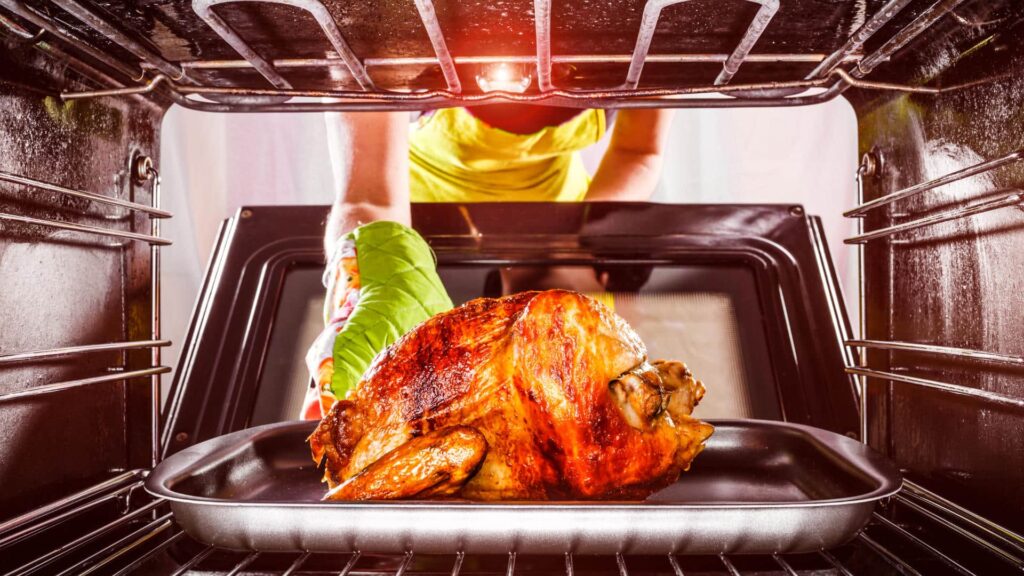Does your Oven Over Heat? Here's the solution

Dear reader, if you purchase through links on our site, we may earn a small affiliate commission to help support the blog - at no extra cost to you. And it never influences our product selection process. Thank you!
Looking for a solution to an overheating oven? Look no further than this article, which provides tips and tricks for keeping your oven running at the perfect temperature.
Whether you have a gas or electric oven, there are many factors that can cause it to overheat. Some common culprits include improper venting, clogged vents and filters, poor insulation, and inadequate air circulation.
Fortunately, there are some simple solutions that can help keep your oven running smoothly. For starters, make sure your vents and filters are clean and unobstructed. You may also want to consider investing in higher-quality insulation or an improved ventilation system for greater efficiency. And be sure to give your oven plenty of space so that air can circulate freely.
If you’re still struggling with an overheating oven, it may be worth consulting a professional for expert advice and recommendations. With the right care and attention, your oven can stay at the perfect temperature for cooking delicious meals in no time!

What Causes an Oven to Overheat?
There are many different factors that can contribute to an oven overheating, including poor ventilation and insulation, clogged or dirty vents and filters, and air circulation issues. In order to troubleshoot your oven and prevent it from overheating in the future, you may want to consider taking some of these steps:
– Cleaning or replacing your filters and vents regularly
– Investing in higher-quality insulation or a more efficient ventilation system
– Ensuring that your oven has ample space around it so that air can circulate freely
If you are still experiencing problems with your oven overheating despite taking these steps, then it may be worth consulting a professional for expert advice and recommendations. With proper care and attention, you can.
There are a number of factors that can contribute to an oven overheating, including improper venting, clogged vents and filters, poor insulation, and inadequate air circulation. For example, if your oven is located in an enclosed space with little ventilation or airflow, it may struggle to stay cool. Additionally, if the vents or filters on your oven become blocked or dirty over time, this may also contribute to overheating.
If you are experiencing issues with overheating in your oven, there are some simple steps you can take to address the problem. First and foremost, make sure that your vents and filters are clean and unobstructed. You may also want to consider investing in higher-quality insulation or installing an improved ventilation system for increased efficiency. Additionally, be sure to give your oven plenty of space so that air can circulate freely.
Heating Element:
The heating element is responsible for transforming the electricity into heat. When it fails, the oven will not be able to maintain a temperature, as this crucial component is what creates the heat needed to cook your food.
If you are experiencing issues with your oven overheating, there may be a problem with either your thermostat or heating element. To diagnose and address these issues, you will need to carefully inspect both components and determine if they are functioning properly. Depending on the type of issue you are experiencing, you may be able to repair or replace the faulty component yourself. Alternatively, you can seek professional assistance if you are unable to identify or remedy the issue on your own.
If your thermostat appears to be working properly, the issue may be with your heating element. This component is responsible for converting electrical current into heat, and when it malfunctions, your oven will not be able to maintain an adequate temperature. To test your heating element, simply turn on your oven and set the temperature to a high level. After several minutes, you should feel the heat coming from your oven. If you do not feel any heat, then the heating element may need to be replaced.

Cooling Fan
If you are experiencing issues with your oven overheating, there may be a problem with either your thermostat or cooling fan. To diagnose and address these issues, you will need to carefully inspect both components and determine if they are functioning properly. Depending on the type of issue you are experiencing, you may be able to repair or replace the faulty component yourself, or you may need to seek professional assistance.
Temperature Sensor.
: Adjusting the Temperature: If your oven has started overheating, you can try adjusting the temperature in order to fix the issue. Depending on your oven, this may involve pressing a few buttons or turning a few dials. Be sure to check your owner’s manual or consult an expert for more specific instructions.
Thermostat Knob.
If your oven door seal is dirty, the heat may not be properly contained, causing the oven to overheat.
One potential solution for an overheating oven is to check the thermostat knob and make sure that it is securely fastened. Additionally, if your oven door seal is dirty or worn down,
Oven Ventilation.
Another solution for an overheating oven is to check the oven’s ventilation system and make sure that it is not blocked or obstructed in any way. This can be done by simply removing any items from around the vent, or by cleaning out built-up debris within the vents themselves. With proper airflow, your oven should be able to maintain a safe temperature and keep your food warm.
Selector Switch.
Finally, if none of these solutions seem to be working, it may be time to invest in a new oven or seek professional assistance. With proper maintenance and care, your oven should be able to run smoothly for years to come. So next time you notice that your oven is starting to overheat, don’t panic! There are simple solutions that you can try to get your oven back up and running in no time.
Thermostat Knob.
If your oven door seal is dirty, the heat may not be properly contained, causing the oven to overheat. One potential
If your oven is overheating, there are a few different potential solutions that you can try. One option is to check the thermostat knob and make sure it is securely fastened. Another possibility is to clean or replace the oven door seal if it is dirty or worn down, as this can affect proper airflow within the oven. Additionally, you can check the oven’s ventilation system to make sure it is not blocked or obstructed in any way, which may be causing your oven to overheat.

How Do You Know If Your Oven is Overheating?
- Set the oven to 350 degrees Fahrenheit
- Place an oven-safe thermometer on the rack in the middle of the oven
- Wait until the oven has finished preheating, this usually takes 15-20 minutes. Wait for 20 to 25 minutes to be on the safe side.
- Check the thermostat to see if the readings are in line with the temperature you’ve set in the oven. Are they? Great! Then your oven is working as intended.
- If the oven’s temperature is above the set temperature, then your oven is most likely overheating.
- Kitchen Knives - May 3, 2024
- Top 10 Best kitchen egg cooker [High Quality] - May 3, 2024
- Top 10 Best cutting boards for kitchen [High Quality] - May 1, 2024
